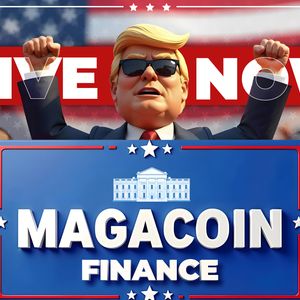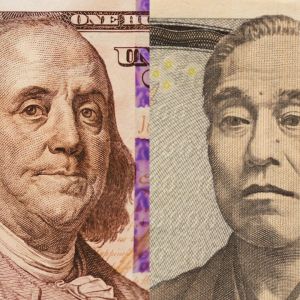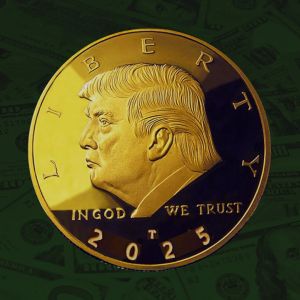In the ever-shifting landscape of global economics and market sentiment, seemingly distant policy decisions can send ripples that eventually reach the cryptocurrency world. A recent announcement from the Office of the U.S. Trade Representative (USTR) highlights one such potential catalyst: the future of existing US tariffs . According to reports from JinSe Finance, the USTR has confirmed that President Trump holds the ultimate authority to decide on alternative measures regarding the current 10% tariffs imposed on various countries. This isn’t just bureaucratic jargon; it’s a signal that significant changes to trade policy could be on the horizon, with potentially far-reaching consequences for the global economy and, by extension, financial markets, including digital assets. What Does the USTR Announcement Really Mean? The core of the USTR’s statement is clarity on the decision-making power. While trade bodies and advisors provide input, the final say on whether to maintain, modify, or eliminate the 10% tariffs rests solely with President Trump. This indicates that any shift won’t come from lower-level negotiations but from a directive at the highest level of the U.S. government. Presidential Authority: The announcement underscores the President’s significant power in setting U.S. trade policy. Focus on 10% Tariffs: The specific mention of the 10% rate points to a potential review of a particular set of tariffs, often those applied broadly to certain goods or countries during previous trade disputes. “Alternative Measures”: This phrase is key. It suggests options beyond simply keeping the tariffs as they are. It could mean reducing the percentage, lifting them entirely for certain goods or countries, or implementing different trade tools. Understanding the context of these Trump tariffs is crucial. They were often implemented as leverage in trade negotiations or as a response to perceived unfair trade practices. Their potential removal or reduction signals a possible shift in strategy or a response to current economic conditions. A Look Back: The Era of Trump Tariffs During his previous term, President Trump made the use of tariffs a prominent tool in his trade policy arsenal. These weren’t limited to a single country but spanned various trading partners, most notably China, but also allies over specific disputes like steel and aluminum imports. The 10% tariff rate was applied to a wide range of goods, impacting supply chains and increasing costs for importers and consumers. The rationale was often to protect domestic industries, encourage manufacturing within the U.S., or force trading partners to the negotiating table to address trade imbalances or intellectual property concerns. The implementation of these tariffs led to retaliatory tariffs from affected countries, creating complex trade disputes that impacted global trade flows and introduced significant uncertainty into the international business environment. What Are the Potential “Alternative Measures”? The USTR’s mention of alternative measures opens up several possibilities. What could these alternatives look like? Here are a few scenarios: Alternative Measure Description Potential Implication Complete Removal Lifting the 10% tariffs on all affected goods/countries. Significant cost reduction for importers, potential boost to trade, positive market sentiment. Partial Reduction Lowering the tariff rate (e.g., from 10% to 5%). Moderate cost reduction, partial easing of trade tensions. Targeted Exemptions Removing tariffs for specific goods, industries, or companies. Benefits specific sectors, requires complex administration. Conditional Removal Lifting tariffs based on trade partners meeting certain conditions (e.g., purchasing more U.S. goods). Tied to negotiation outcomes, could be part of a larger trade deal. Shifting Focus Replacing broad tariffs with more targeted measures like quotas or specific import restrictions. Different mechanism for controlling trade flows, could still cause market disruption. Each of these measures would have a distinct economic impact , affecting different industries and potentially altering global supply chains. The choice of measure would likely depend on the specific goals President Trump aims to achieve – whether it’s stimulating the economy, gaining leverage in new negotiations, or addressing specific trade grievances. How Could Tariff Changes Impact the Economy? Changes to significant tariffs like the 10% rate can have ripple effects throughout the economy. Understanding these potential impacts is key to assessing the broader market environment. Potential Benefits of Reducing/Lifting Tariffs: Lower Costs for Businesses and Consumers: Tariffs are essentially taxes on imports. Reducing or removing them lowers the cost of imported goods, which can decrease input costs for businesses and lead to lower prices for consumers, potentially easing inflationary pressures. Boost to International Trade: Reduced trade barriers generally encourage more trade, benefiting companies involved in importing and exporting. This can lead to increased economic activity. Improved Supply Chain Efficiency: Tariffs can force companies to reroute supply chains or find alternative, potentially more expensive, suppliers. Removing tariffs can allow companies to optimize their supply chains based on efficiency rather than tariff avoidance. Positive Market Sentiment: Easing trade tensions is often viewed positively by financial markets, as it reduces uncertainty and can signal a more stable global economic environment. Potential Challenges/Risks: Domestic Industry Concerns: Industries that benefited from tariff protection might face renewed competition from imports if tariffs are removed. Negotiation Hurdles: Reaching agreements with trade partners on reciprocal actions can be complex and time-consuming. Market Volatility: The process of debating and implementing tariff changes can create uncertainty, leading to market fluctuations until a clear decision is made. Impact on Government Revenue: Tariffs generate revenue for the government. Reducing them would require finding alternative revenue sources or accepting lower income. The net economic impact will depend heavily on the scope and nature of the changes, as well as the reaction of U.S. trading partners. What Does This Mean for Crypto Investors? While tariffs might seem distant from Bitcoin and altcoins, they are a significant factor in the macroeconomic environment that heavily influences the crypto market. Here’s the connection: Cryptocurrencies, particularly Bitcoin, are often viewed through different lenses – as a store of value, a hedge against inflation, or a risk asset. Their performance can be tied to broader economic trends and investor sentiment. Macro Sentiment: Changes in trade policy significantly impact overall market sentiment. Positive developments (like easing tensions) can increase investor confidence and risk appetite, potentially leading to increased investment in assets like crypto. Negative developments (like new trade disputes) can increase uncertainty and lead investors to seek safer assets, potentially pressuring crypto prices. Inflationary Pressures: Tariffs can contribute to inflation by increasing the cost of imported goods. If removing tariffs helps reduce inflation, it could influence central bank policies (like interest rates), which in turn affect liquidity and investment flows into risk assets like crypto. U.S. Dollar Strength: Trade policy can impact the strength of the U.S. dollar. A stronger dollar can sometimes correlate with weaker performance in assets like Bitcoin (the ‘digital gold’ narrative), while a weaker dollar might make dollar-denominated assets like crypto more attractive to international investors. Global Economic Growth: Tariffs and trade disputes can hinder global trade and economic growth. Policies that stimulate trade could support stronger global growth, creating a more favorable environment for risk assets. Therefore, President Trump’s decision on these US tariffs is not just a trade story; it’s an economic signal that crypto investors should monitor closely as part of their broader market analysis. Actionable Insights for the Savvy Investor Given the potential for significant policy shifts, how should a crypto investor approach this news? Stay Informed: Follow news from the USTR, the White House, and major financial news outlets regarding trade policy discussions and announcements. Watch Market Reactions: Observe how traditional markets (stocks, commodities, forex) react to trade news. These reactions often provide clues about broader market sentiment that can spill over into crypto. Assess Macro Context: Continuously evaluate the overall macroeconomic environment – inflation data, interest rate expectations, economic growth forecasts – and consider how potential tariff changes fit into this picture. Consider Diversification: Ensure your portfolio is diversified and aligned with your risk tolerance, acknowledging that macro events like trade policy shifts can introduce volatility. Don’t Overreact: Avoid making impulsive trading decisions based on speculation. Wait for concrete policy announcements and assess their likely real-world impact before making significant portfolio changes. The future of the Trump tariffs is a key piece of the puzzle in understanding the potential economic trajectory, and its influence on financial markets, including the dynamic world of cryptocurrency. Conclusion: The Ball is in the President’s Court The USTR’s confirmation that President Trump will decide the fate of the 10% US tariffs underscores the significant influence executive decisions can have on trade policy and the resulting economic impact . Whether he chooses to lift, reduce, or modify these tariffs, the decision will send clear signals to domestic industries, international trading partners, and financial markets alike. For those navigating the crypto space, understanding these macro-level developments, particularly concerning global trade and the potential easing or heightening of trade tensions, is vital. It’s a reminder that the crypto market doesn’t exist in a vacuum but is intertwined with the broader forces shaping the world economy. The coming months could bring clarity on this front, potentially setting the stage for new economic trends that will undoubtedly be felt in the digital asset landscape. To learn more about the latest crypto market trends and how global economic policies are shaping the future of digital assets, explore our articles on key developments impacting the crypto space.



















